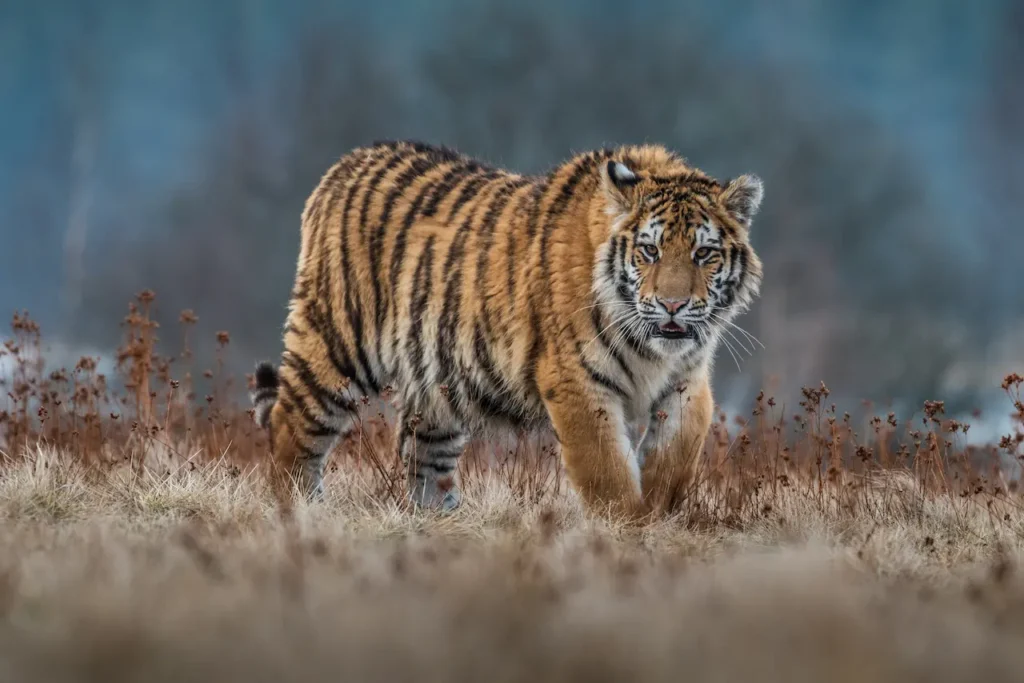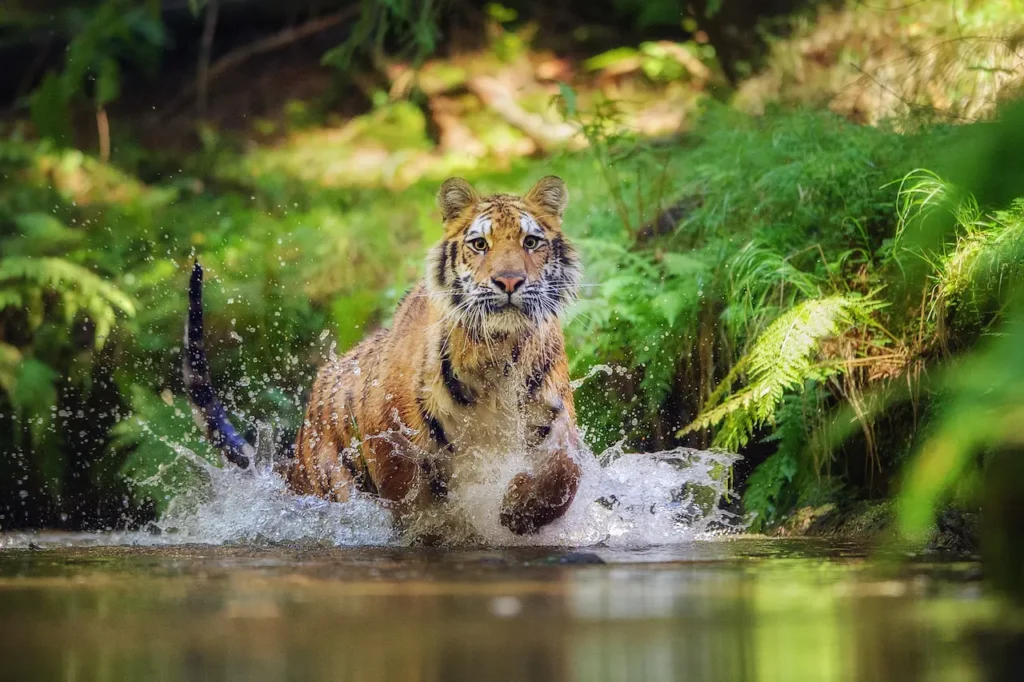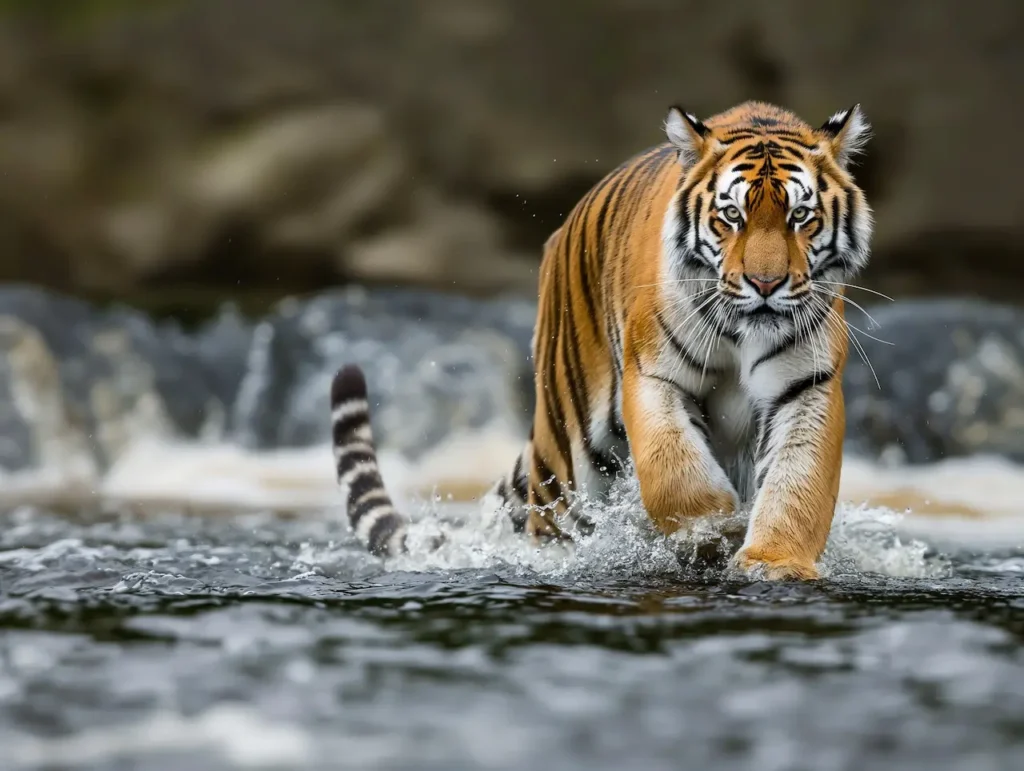What Eats A Siberian Tiger?
Categories
- Accipitridae (1)
- Acrididae (1)
- Algae (2)
- Alligatoridae (1)
- Amoebidae (1)
- Amphibians (3)
- Anatidae (1)
- Anguillidae (1)
- Arachnids (2)
- Bears (2)
- Big Cats (3)
- Birds (13)
- Bovidae (5)
- Bufonidae (1)
- Camelids (1)
- Cameras (1)
- Canines (13)
- Caridea (1)
- Carnivora (10)
- Castoridae (1)
- Cats (5)
- Cebidae (1)
- Cephalopod (1)
- Cervidae (2)
- Cetacean (1)
- Chondrichthyes (1)
- Crocodilia (2)
- Crustaceans (4)
- Culicidae (1)
- Cyaneidae (1)
- Dasypodidae (1)
- Dasyurids (1)
- Deer (1)
- Delphinidae (1)
- Desktop (1)
- Didelphidae (1)
- Dinosaurs (1)
- Dogs (13)
- Dolphins (2)
- Echinoderms (1)
- Education (10)
- Elephantidae (1)
- Equine (1)
- Erethizontidae (1)
- Erinaceidae (1)
- Farming (1)
- Felidae (5)
- Fish (5)
- Food Chain (31)
- Food Web (2)
- Formicidae (1)
- Frugivore (1)
- Gaming (1)
- Gastropods (1)
- Giraffids (1)
- Great Apes (2)
- Health Conditions (3)
- Herbivore (4)
- Hi-Fi (1)
- Hippopotamidae (1)
- Hominidae (1)
- Insects (10)
- Invertebrates (2)
- Keyboards (1)
- Laptops (1)
- Leporidae (1)
- Mammals (23)
- Marsupials (4)
- Mephitidae (1)
- Microchiroptera (1)
- Mollusks (2)
- Mongoose (1)
- Muridae (1)
- Nocturnal Animals (1)
- Odobenidae (1)
- Omnivore (2)
- Phasianidae (1)
- Phocidae (1)
- Plankton (1)
- Plants (2)
- Primate (1)
- Ranidae (1)
- Reptiles (7)
- Rhinocerotidae (1)
- Rodents (5)
- Salamandridae (1)
- Scarabaeidae (1)
- Sciuridae (2)
- Sharks (1)
- Shellfish (1)
- Sound (1)
- Spheniscidae (1)
- Suidae (1)
- Superfamily Papilionoidea (1)
- Theraphosidae (1)
- What Eats (5)
It is the largest cat species in the world; the Siberian tiger, or Amur tiger as it is also known. The cat roams through the snow in the remote forests and mountains of the Russian Far East, northeastern China and parts of North Korea.
It is an iconic orange-coated striped creature that tugs on awe and fear at once. Despite its size, strength, and solitary nature, the Siberian tiger is threatened, however. Life and diet of it can be influenced by predators, environmental factors and competition.
In this article, we will take a look at the natural threats of Siberian tigers, their placement in the food chain, and what eats them and what they consume.
Table of Contents
ToggleWhat Eats A Siberian Tiger?
Even though Siberian tiger is a top predator, very few predators actively prey upon it. That being said, a few scenarios and dangers have threatened the tiger to attack or cause injury. Here are four key species that can challenge or kill a Siberian tiger, either directly or indirectly:
Brown Bears
The brown bear is one of the few animals that can be said to rival a Siberian tiger, and the Ussuri brown bear, with which the Siberian tiger shares its habitat, is one of the largest brown bears.
These are massive bears, capable of reaching 600 kg (1,300 lbs), that occasionally come into conflict with tigers for food or territory.
Although Siberian tigers are not hunted by brown bears, brown bears will scavenge tiger kills and even engage in lethal confrontation with them over shortages of resources such as bears empty out the kills of a tiger.
Brown bears, however, have killed and eaten tigers, at least in rare cases when the tiger is small, sick or wounded.
Other Siberian Tigers
Another tiger is the most important enemy of a Siberian tiger. Tigers are solitary animals, fierce territorial fighters. Adult males can find themselves in fatal conflicts over territorial disputes.
Tigers fight to the death for territory: As a new male comes to the territory in hopes of establishing himself in the position of dominant male, this new male may be forced into intense fights with the dominant male, with the loser of the fight killed.
Next, the tiger that wins might eat parts of its fallen rival, a behavior considered either a means to eliminate competition and take its place or to claim and assert dominance over its land.
Wolves
Wolves often stand little chance against a healthy adult Siberian tiger, but there is one situation where they are a threat. Wolves usually travel in packs, its prey will have a number advantage. A pack attacks an injured or weak tiger, or one, especially a cub.
Furthermore, wolf packs do also scavenge where the remains of a tiger that has died for natural reasons are available.
Humans
The most dangerous predator to the Siberian tiger is man, no doubt. Although not a natural predator, human activity, including poaching, habitat destruction, and human wildlife conflict, has caused a huge decline in populations of tigers.
Siberian tigers are killed by poachers for their valuable skins and body parts which are offered for sale on the black market, to satisfy the requirements of traditional medicine or as status symbols.
They also decline in numbers in some cases when local communities hunt or poison them when tigers are seen to be a threat to livestock or human life.
What Does A Siberian Tiger Eats
A Siberian tiger is an apex predator, it sits atop the food chain in its habitat. Its diet is made up largely of large ungulates (hoofed mammals), but the latter can dine on smaller animals when needed. Here are four key species that the Siberian tiger preys upon:
Manchurian Wapiti (Elk)
The Manchurian wapiti, or elk, that roam the forests of the Russian Far East are one of the Siberian tiger’s preferred prey. Being large and abundant, these large herbivores offer big sustenance to tigers.
Instead, these elks often fall victim to the ambush of a tiger, who bites them in the throat or neck before death.
Instead of targeting large prey such as buffaloes and a cow and it’s calf the tigers ensure getting enough food to feed them a few days, a week or more depending on how big their kill was.
Wild Boar
Another important part of the Siberian tiger’s diet are wild boars. Common in the tiger’s range, these omnivorous animals are challenging, but rewarding targets.
They are wild boars … very agile and very aggressive and often travel in family groups; they are dangerous prey. But, because a tiger would have to take down an elk, they’re quite smaller and more practical.
The weighing overtures from tigers can be serious, as they have hunted these beasts for long periods of time before pouncing off with a quick, lethal onslaught.
Sika Deer
Siberian tiger prey list also contains the Sika deer. The Manchurian wapiti is smaller than these deer, but more agile and fleet footed. Dense cover is preferred by sika deer, which means tigers must fool them into thinking they are not there, before silently catching them by surprise.
Ambush hunters, the Siberian tigers use the setting to their advantage, hiding themselves, sometimes only meters away, until they are near enough to make sudden leap and deliver a crushing bite.
Because it is a sika deer, the deer is a good size for a tiger to hunt and because of that size it takes enough meat for a couple meals without being as difficult to hunt as larger prey.
Musk Deer
Though perhaps not as large as are other ungulates on which tigers feed, musk deer have important nutritional value, especially when other prey is scarce. Musk deer are known to be swift animals, which enables them to move fast through the forest.
However they are fast and easy prey for the Siberian tiger’s stealth and ambush action. Tigers isolate the animals more easily, but Musk deer usually travel alone.
The Diet and Hunting Techniques of a Siberian Tiger
As opportunistic hunters, Siberian tigers eat what they can find: what’s available. Large ungulates form the bulk of their diet although they will consume smaller mammals, birds and fish when they occur.
The tiger is able to eat a great number of foods, which enables it to subsist in such an immense and generally sparse habitat.
Different types of an ambush are used by tigers to capture their prey. Their method of attack is heavy on stealth and cover, they use dense vegetation, snow, and natural landscape to get as close as they can without having to risk an ambush.
A tiger can crush its prey thanks to a powerful leap and a fatal bite to the neck or throat. Like all cats, tigers have a strong sense of smell and excellent night vision, making them effective hunters in poor light.
Along with other cats they are mostly solitary and hunt alone, usually taking kills to some secluded place for feeding where they would not be disturbed both by other predators or scavengers.
Threats to Siberian Tiger Diet and Habitat
Siberian tigers are declining, because the population of their prey, and the health of their habitat, is also decreasing.
With human activities encroaching on forests up to 80% of the key prey species, such as elk, deer and boar, become less, creating a positive feedback loop of predator poaching and forest destruction.
Logging, agriculture, and human settlement fragment tiger habitat and close down the area in which tigers can roam, hunt and breed.
To preserve the Siberian tiger’s habitat, and to restore populations of its prey, conservation efforts have been focused on. Conservationists hope to provide tigers access to the prey they will need to survive and thrive by creating protected areas and by restraining poaching.
Conclusion
Siberian tiger – a magnificent apex predator, an apex predator perched right at the top of the food chain – is not impregnable, however. Fortunately, the Siberian tiger’s diet of large ungulates such as elk and deer makes it reasonably fed and has a rich, diverse diet.
Although, it faces a threat of danger from brown bears other tigers, wolves and humans. To conserve this magnificent tiger, it is important to understand what eats a Siberian tiger and what it eats.



